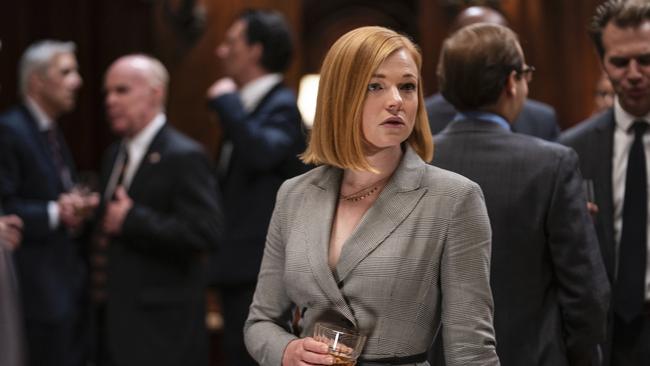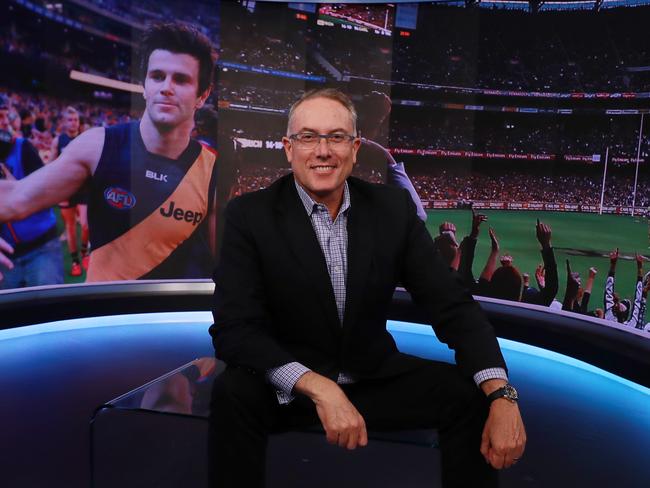Foxtel turbocharged for audience and revenue growth
Chief executive Patrick Delany is building a media juggernaut through a winning combination of content and streaming technology.

When Patrick Delany was appointed chief executive of Foxtel in early 2018, there weren’t too many media bosses who envied his position.
Indeed, one Sydney newspaper greeted his elevation with the headline “Fixing Foxtel: this man has the toughest job in Aussie media”.
That same article quoted a leading investment banker describing Foxtel as “an asset in search of a strategy”.
But on Thursday, at the Foxtel Group’s inaugural strategy day, Delany had a clear message – and an unmistakeable strategy – for investors: the Foxtel of 2018 is not the Foxtel of 2021.
“Today’s Foxtel Group is a very different company to the one-product Foxtel of three or four years ago,” he said.
“We are now the disrupter of the Australian media industry.”
No longer drowning in debt, and with a subscriber base that currently sits atop four million across Foxtel and its streaming platforms Kayo Sports and Binge, the company has remade itself in the wider social context of how Australians want to be entertained – namely, on their own terms, in their own time, and via premium technology.
As Delany said when asked on Thursday about the direction of the company: “We’ve got to go where our consumers want to go.”

Foxtel’s numbers, which have not always been pretty in the past, tell the story. The company has attracted one million new subscribers in the past year alone; streaming revenue has more than doubled to $360m in the past two years; and the company’s overheads are down.
The Foxtel Group’s overall share of the streaming market is also on the rise, and expected to grow further with 85 per cent of Australian households forecast to have at least one subscription service by the end of FY25.
Last month, the company literally cut the cord with its past, introducing the cable-less iQ5 plug-and-play set-top box. This transition will be further developed in coming months with a software update that will allow the iQ4 set top box to be IP-only, without the need for a satellite.
All of which gave Delany a solid platform on Thursday from which to trumpet the company’s three-pillar strategy: to grow through streaming; to strengthen Foxtel; and “to win” with world-class content and technology.
But it wasn’t that long ago that analysts were predicting the entertainment company’s demise.
For years, Foxtel wasn’t able to penetrate the market beyond about 25 per cent of the population – largely because it was seen by consumers as unaffordable, and the service wasn’t available without a cable or a satellite dish.

“It never moved, we were stuck,” Delany told The Australian after Thursday’s briefing.
For the company to re-energise itself – and, indeed, survive – the strategy needed to be bold.
“We said, ‘We’re going to go for it with streaming’,” Delany recalled. “We wanted to go after the 75 per cent we hadn’t been able to get to, and hang on to the 25 per cent we had.”
Guided by a level of detailed data that hadn’t previously been available, Foxtel zeroed in on top-tier sports, such as the AFL, NRL, cricket and motorsport, as well as premier international entertainment, including hit shows such as Succession, Mare of Easttown and The Undoing.
Tough decisions were also made with regards to cost-cutting. But, further to that, Delany recognised the need for cultural change within the company, bringing all the divisions of the Foxtel Group “under the one head”.
“We started again, as if we were working on a blank piece of paper,” Delany said on Thursday.
“We are now at 2.1 million total streaming subscribers and growing,” he said.
“This gives us a new platform to showcase and monetise our content.
“We started with Foxtel Go and Foxtel Now, and we have rapidly accelerated with Kayo and Binge.”
Later this month, the Foxtel Group will launch its third streaming service in as many years.
Flash is a new platform that will feature more than 20 local and global live news sources, which will help propel the company to its stated aim of five million overall subscribers within the next three years.

The early success of Kayo Sports, which now boasts more than one million subscribers, was the technological blueprint for Binge, and will also be the template for Flash.
“In an increasingly disaggregated TV ecosystem, with many streaming services, premium aggregation is a high-quality experience that is desirable for consumers,” Delany said.
Steve Molk, co-creator and senior editor at industry website tvblackbox.com.au, said Foxtel’s technological shift with iQ5 was a “good move, if a little late”, and its focus on streaming was critical for its future success.
“I think its tech strategy is shifting the dial … and it makes it heaps easier and heaps cheaper for Foxtel to deliver its product to customers, but also for the market to get in,” he said.
“It now allows them to settle in to a point where the majority of the market is available to them.”
He added: “The free-to-air networks will tell us that they’re here to stay … but the benefit for the likes of Foxtel is that their content is valuable to them no matter how they deliver it.”
Analyst Angus Aitken, a partner at Aitken Murray Capital Partners, said Foxtel’s resurgence showed that good content was still the best strategy.
“A handful of years ago, all the focus on Foxtel was the downside risks … sporting rights and content costs were escalating, and that all led to a perception of a business going backwards,” he said.
“Now, with the streaming assets growing nicely in a sustainable way, we see that this is a true growth business.
“Foxtel is just another asset in News Corp – from the traditional newspaper mastheads to HarperCollins – that is seeing strong growth in a digitised world, as they transform their core businesses from old economy to new economy businesses.
“It’s much like a few years ago when everyone was worried that Amazon was going to kill every retailer globally.
“But only the lesser-quality retailers struggled, and the best retailers have thrived. If you have good content that consumers want to watch, you can grow a very nice business.”
As for the widely speculated Foxtel IPO – a listing on the Australian Securities Exchange has been touted as a likely development in the first half of next year – Delany is circumspect.
“That’s a matter for our shareholders,” he told investors at Thursday’s briefing.
Pushed further, he later told The Australian: “What we’re trying to do is get the story out there of what we’ve done, which is create some value and growth.
“There’s a big job still to go. We’re on the tools and we’ve got to keep going.”





